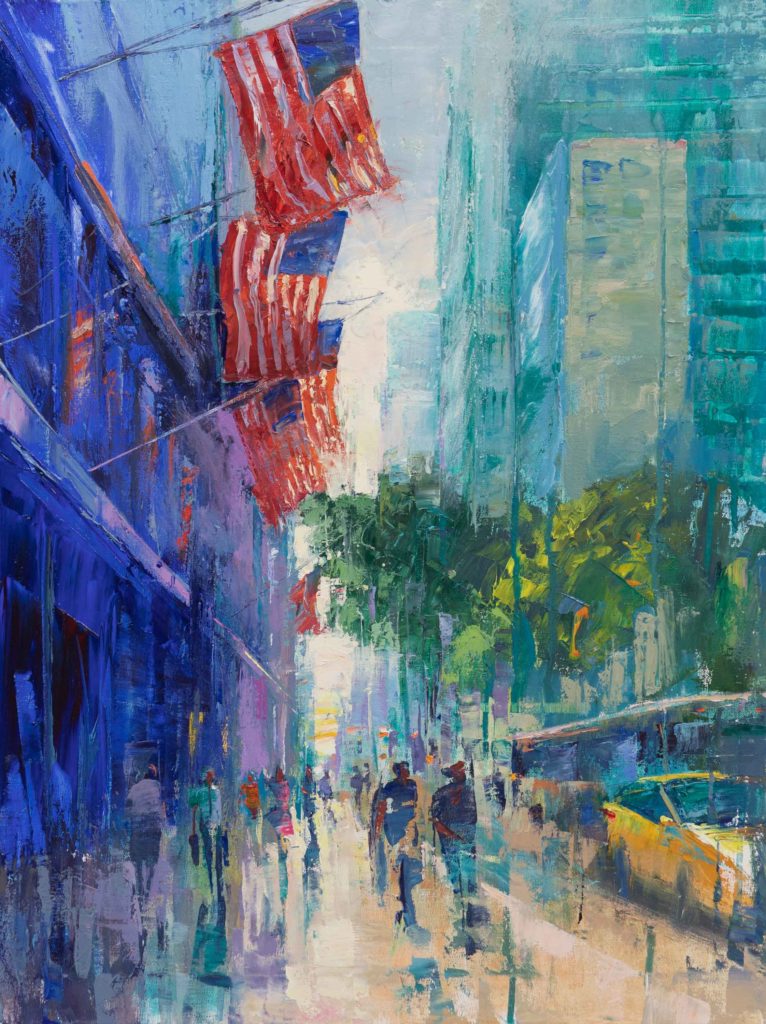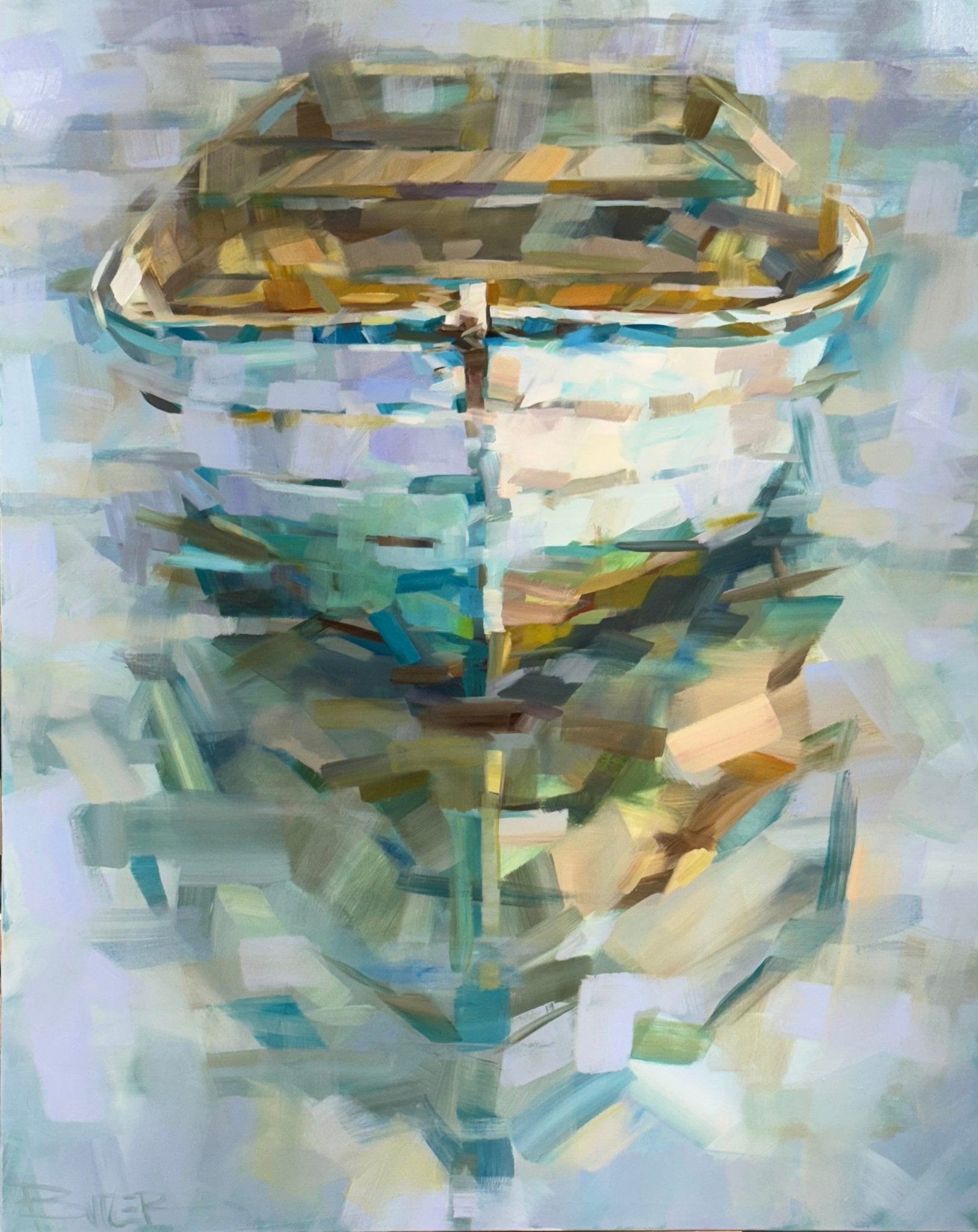Hand-Painted Artworks: Oil Paintings for Sale by Painters
Wiki Article
Checking out All About Oil Paintings: A Guide to Comprehending Their Charm and Value
Oil paints have actually captivated audiences for centuries, providing a glimpse right into the artistic mastery of various ages. Their rich background is intertwined with ingenious techniques and profound emotional expression. Understanding the materials and approaches behind these art work can enhance appreciation. Furthermore, the marketplace for oil paintings presents chances for collectors and investors alike. As one discovers this remarkable globe, the question occurs: what makes an oil painting absolutely beneficial?The Background of Oil Painting: A Trip Via Time
Oil paint has origins that date back to ancient times, it absolutely grew throughout the Renaissance, when musicians discovered its versatility and rich color potential. Early examples can be traced to the 7th century, with techniques advancing notably across societies. The medium ended up being popular in Northern Europe in the 15th century, especially with the works of artists like Jan van Eyck, who spearheaded its usage for in-depth realistic look and lively tones. This duration marked a departure from tempera paints, enabling greater deepness and appearance. As oil paint spread, it influenced countless artists, leading to masterpieces by distinguished figures such as Leonardo da Vinci and Rembrandt. The medium's legacy proceeds, shaping the art globe well right into contemporary times.Recognizing Oil Paints: Materials and Techniques
As artists check out the globe of oil paints, they run into a diverse variety of materials and methods that specify this tool. The primary components of oil paint consist of pigments, which supply shade, and drying out oils, such as linseed, that bind the pigments and promote application. Different ingredients can modify the paint's texture and drying time, improving versatility. Methods like glazing, where clear layers are developed, and impasto, which entails applying thick paint, permit various aesthetic effects. In addition, using brushes, scheme blades, and also fingers can produce unique textures and finishes. Understanding these methods and products enables musicians to fully share their imagination and achieve the preferred impact in their art work.The Function of Shade in Oil Paints
Color plays a pivotal role in oil paints, influencing both aesthetic charm and psychological vibration. Understanding color concept essentials, consisting of the connections in between shades, can improve a musician's capacity to convey mood and ambience. Additionally, grasping color mixing methods enables better deepness and richness in a painting's scheme.

Shade Theory Essential
Comprehending color theory is necessary for artists dealing with oil paints, as it develops the structure for developing aesthetically interesting and harmonious compositions. Shade concept includes the study of how shades connect, the color wheel, and the partnerships between key, secondary, and tertiary shades. Musicians make use of corresponding colors to boost contrasts and create focal factors, while similar shades advertise unity and cohesiveness within a piece. In addition, the principles of warm and great colors affect the understanding of deepness and area in a painting. Understanding these principles allows artists to manipulate shade efficiently, leading the audience's eye and interacting their designated message. Mastery of color theory inevitably enhances a musician's capability to share emotions and ideas through their job.
Emotional Influence of Shade
The emotional impact of shade in oil paintings plays an important role in just how audiences connect and view with artwork. Colors evoke specific feelings and state of minds, affecting the visitor's mood. Warm shades like reds and oranges can develop a feeling of heat and energy, while great tones such as blues and eco-friendlies frequently stimulate calmness or self-questioning. Artists tactically select shade combinations to improve narrative elements, guiding the audience's psychological journey. The saturation and comparison of shades better enhance these effects, attracting attention and producing focus. Eventually, the interaction of shades in oil paintings not just boosts their aesthetic appeal but also works as a powerful medium for psychological expression, enhancing the audience's experience and interpretation.Shade Mixing Techniques
While numerous elements of oil painting add to the general composition, understanding color blending strategies is vital for accomplishing wanted impacts and deepness. Color blending can be come close to through various approaches, consisting of the subtractive and additive processes. Additive mixing involves incorporating shades of light, while subtractive blending depends on pigments, where colors blend to create new tones. Artists usually use a minimal scheme to produce unified jobs, understanding the connections between primary, secondary, and tertiary colors. Methods such as glazing and scumbling even more enhance deepness and brightness. By skillfully blending colors, an artist can evoke feelings, create focal factors, and attain a sense of realistic look, inevitably raising the paint's emotional and aesthetic influence.Famous Oil Painters and Their Iconic Functions

Renowned for their proficiency of shade and technique, oil painters have actually developed several of the most popular art work in history. Renowned musicians like Vincent van Gogh astounded target markets with his stirring brushwork in "Starry Evening," while Claude Monet's "Impression, Daybreak" laid the groundwork for Impressionism. Leonardo da Vinci's "Mona Lisa" continues to be an enduring icon of imaginative wizard, showcasing his ability in catching human expression. At the same time, Rembrandt's "The Evening Watch" highlights his ingenious usage of light and shadow. Other remarkable figures include Pablo Picasso, that revolutionized modern-day art with his bold testing in jobs like "Les Demoiselles d'Avignon," and Georgia O'Keeffe, whose lively representations of landscapes and blossoms aided specify American modernism. Each musician's special design contributed considerably to the oil paint landscape.
Just how to Examine the Top Quality of an Oil Paint
Examining the high quality of an oil painting includes a mindful assessment of craftsmanship strategies, as well as an analysis of color and structure. Observing brushwork, layering, and the application of paint can expose the musician's skill level. Additionally, the interaction of shades and the total arrangement of elements contribute substantially to the painting's aesthetic worth.Examining Craftsmanship Methods
A meticulous analysis of workmanship techniques is essential for figuring out the quality of an oil paint. Critics must first take a look at the application of paint; thick, distinctive brushstrokes may suggest a knowledgeable hand, while extremely uniform applications might show a lack of deepness. oil paintings for sale. The layering method is also essential; the visibility of lusters and varied thickness can enhance luminosity and complexity. Furthermore, the top quality of the products made use of, such as the canvas and pigments, plays a substantial function in sturdiness and total visual. Interest to information in components like edges and changes in between colors reflects the artist's commitment to their craft. Eventually, these strategies add to the paint's psychological impact and market value, acting as signs of the musician's skill and intentEvaluating Color and Composition
While examining the high quality of an oil painting, one need to concentrate on the interplay of color and structure, as these aspects are basic to the artwork's total influence. Color choices can evoke feelings and establish mood; therefore, the artist's palette must be examined for harmony and contrast. A well-balanced structure directs the viewer's eye and creates a sense of unity. Musicians typically use techniques like the regulation of thirds or leading lines to boost visual interest. In addition, using light and shadow can include depth, enhancing the three-dimensionality of the paint. Ultimately, a successful oil painting marries color and make-up, involving the viewer and welcoming a much deeper admiration of the musician's vision and strategy.Taking care of and Preserving Oil Paintings
Correct treatment and preservation of oil paints is essential for keeping their integrity and durability. To secure these art work, it is crucial to display them far from direct sunlight, which can create fading and discoloration. Preserving a steady atmosphere with regulated temperature and humidity more help in preventing damages. Cleaning must be done gently making use of a soft, dry fabric, avoiding any rough chemicals that might hurt the paint or varnish. Routine inspections for indications of deterioration, such as splitting or flaking, are suggested. When storing or moving oil paints, correct padding and framing are required to avoid physical injury. Eventually, diligent treatment adds to the aesthetic charm and worth of oil paintings over time.The Market for Oil Paints: Accumulating and Investing
Recognizing the marketplace characteristics for oil paints is crucial for capitalists and collectors alike. The worth of these artworks is affected by numerous elements, including the artist's reputation, historic importance, and present patterns. Enthusiasts commonly look for items that reverberate personally while taking into consideration possible recognition in worth. Galleries and public auctions work as primary places for buying and selling, with prices fluctuating based on demand and rarity. Buying oil paints needs study into the market, in addition to an understanding of credibility and provenance. Furthermore, arising musicians might provide opportunities for significant returns, while developed names can regulate high costs. Overall, a critical method to gathering can yield both aesthetic satisfaction and financial benefits.
Often Asked Inquiries
What Are the Environmental Impacts of Oil Painting Products?
The ecological influences of oil painting products include the launch of unstable organic compounds (VOCs), unsafe waste generation, and resource removal for pigments. These variables add to contamination and ecological deterioration, elevating worries among ecologically conscious artists and customers.Exactly How Do Different Canvases Impact Oil Painting Results?
Different canvases influence oil painting results significantly. Absorbency, surface, and structure quality can alter paint check here application, drying times, and color vibrancy. Artists typically choose specific canvases to achieve desired results and boost their creative expression.Can Oil Paintings Be Brought Back if Damaged?
Oil paintings can indeed be restored if harmed. Specialist conservators use different techniques to repair rips, tidy surfaces, and address discoloration, ensuring that the artwork maintains its initial beauty and value for future generations.What Are the Indications of an Original Oil Painting?
The indications of an original oil painting consist of visible brush strokes, texture variants, and an irregular canvas weave (oil paintings for sale). In addition, credibility may be confirmed through provenance, trademarks, and the presence of a varnish layer one-of-a-kind to oil toolsHow Has Modern Technology Influenced Modern Oil Painting Techniques?
Technology has considerably influenced contemporary oil painting methods by introducing digital devices for preparation, boosted products for structure and durability, and on the internet platforms for sharing and selling art, consequently broadening artists' creative possibilities and target market get to. Oil painting has roots that date back to ancient times, it absolutely prospered throughout the Renaissance, when artists discovered its flexibility and rich color capacity. The emotional impact of shade in oil paintings plays a crucial function in just how audiences link and regard with art work. While many facets of oil painting contribute to the total make-up, mastering shade mixing methods is crucial for achieving preferred impacts and deepness. Examining the high quality of an oil painting entails a cautious evaluation of workmanship strategies, as well as an analysis of color and composition. While assessing the high quality of an oil painting, one need to concentrate on the interaction of shade and make-up, as these components are basic to the artwork's total impact.Report this wiki page